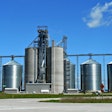
CoBank has released its Grain Elevator Outlook for 2018/19.
Key points include:
- Trade disruptions and large fall crops have had the biggest impacts on grain markets so far this year.
- The U.S.-China trade dispute has impacted soybeans most this year with carry widening and basis weakening significantly.
- Corn and wheat fundamentals support basis strengthening this year, while carry in the future’s market will provide a reasonable return to storage.
- Transportation costs are largely in line with historical averages. However, elevators heavily dependent on trucking will face diesel price and trucker availability risks.
Trade disputes and large fall crops have been the major drivers of grain markets this year. Both factors have contributed to wider carry and weakened basis. Other factors outside the grain markets will also play important roles.
Rising interest rates and high diesel prices will increase costs for grain elevators. Fundamentals for both corn and wheat are promising. Demand for corn is very strong and global stocks are shrinking.
Wheat demand continues to grow while drought conditions reduced production for major U.S. export competitors including the EU, Russia, Ukraine, and Argentina.
These strong fundamentals should support good carry and a strengthening basis through the year.
A record soybean crop is poorly timed as the U.S.-China trade dispute has moved into high gear, excluding the U.S. from the Chinese market. These huge supplies and weak demand will hinder basis appreciation. However, futures market carry will incentivize soybean storage until the summer.
The report concludes that average grain elevator margins are expected to be relatively normal this year for most of the Midwest. However, elevators are cautious about the outlook.
Trade disruptions and large crops will test the storage capacity of several elevators, especially in the Northern Plains.
While soybean margins will likely be weak in the near term, the market fundamentals of corn will support strong corn handling margins. Additionally, wheat margins will be strong as elevators benefit from healthy carry on old grain blended with this year’s quality crop.
Futures market carry will incentivize storage of these large crops, while basis will likely strengthen for corn and wheat. It is unclear how much basis appreciation soybeans will see amid weak demand and a record crop.
The keys to watch in the year ahead will be for any resolution to the trade dispute as well as the South American crop. If the trade dispute is resolved, China will buy U.S. soybeans again, but they are unlikely to return to the same levels as before. New relationships were built during this disruption with non-U.S. suppliers. Chinese buyers will not switch back right away and may not return to previous levels for several years.
Brazil is likely to have a huge soybean crop in 2019, and Brazil’s corn crop is projected to rebound from last year’s weak production due to dry weather. Additionally, Argentina is unlikely to repeat last year’s drought-reduced production levels.
As the exact size of South America’s production is revealed in the months ahead, markets will respond. A larger than expected crop will widen the carry and mute any basis appreciation, and vice versa if production falls short of projections.
While corn and wheat margins look solid on good carry and expected basis improvement, corn ownership may be difficult for some elevators to obtain. Additionally, soybean margins are uncertain for the year ahead. Elevators are confident they will make a margin on them, but the question is when.
Trade, logistics, and export competitor production will be major factors impacting margins going forward.
Read the full report here.


















